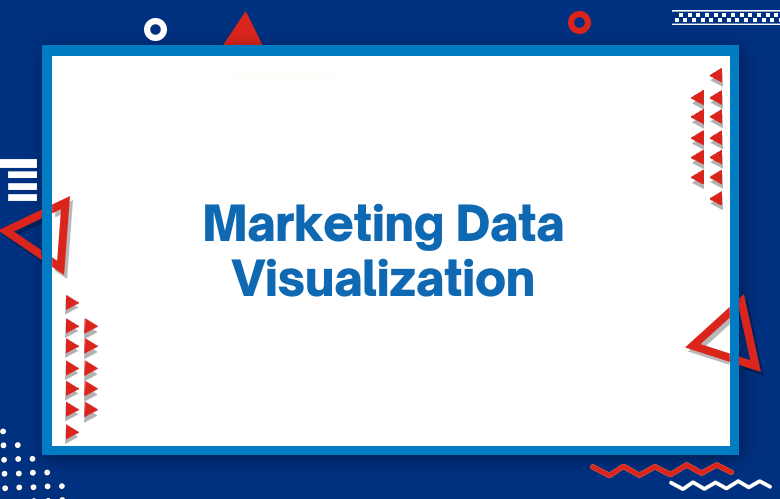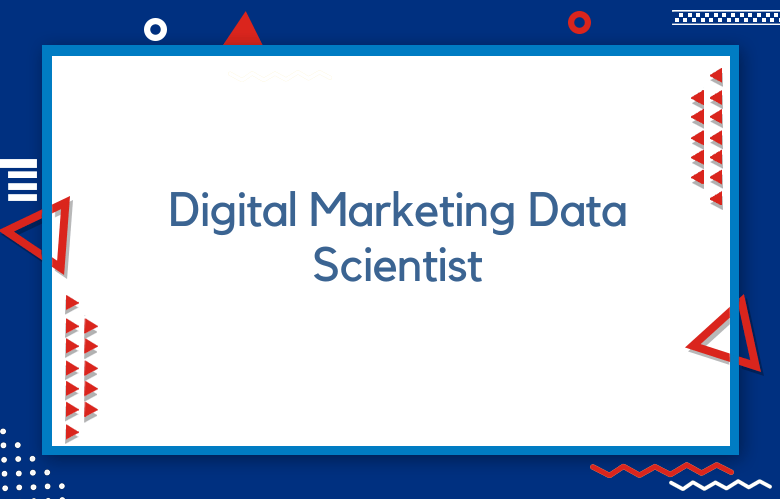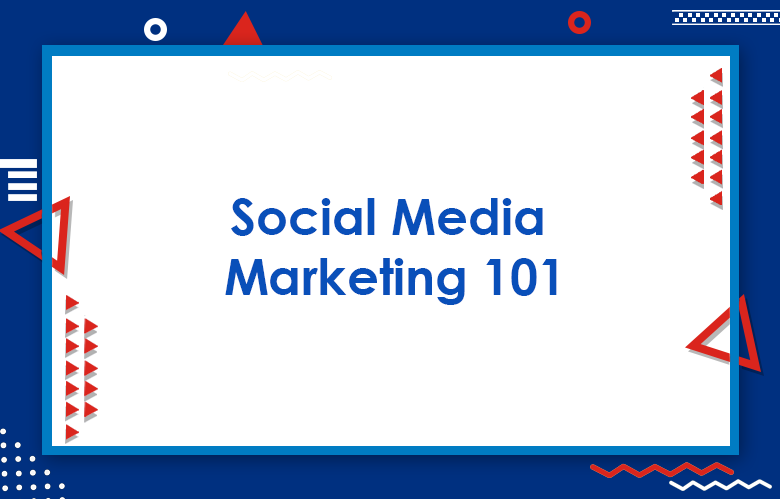Marketing Data Visualization: Making Numbers Speak

Marketing Data Visualization: Making Numbers Speak Marketing data visualization is a powerful tool for marketers. Marketing data visualization makes it easier to understand how different marketing strategies affect the business and identify the best ones. The marketing strategy should be based on what customers want, not opinions or assumptions about what they might like.
Marketing data visualization helps marketers by making numbers speak and eliminating personal views from decision-making. This blog post will show how marketing data visualizations can help your business grow!
Marketing data visualization is a powerful tool for marketers. It helps them understand how different marketing strategies affect the business and identify the best ones.
The marketing strategy should be based on what customers want, not on opinions or assumptions about what they might wish. Marketing data visualizations help marketers make numbers speak. Marketing tactics need to be implemented quickly to affect, but there needs to be a balance between doing so and still being able to measure success accurately.
Marketing Data Visualization helps balance these two aspects of any campaign- when you use this technique correctly.
Marketing Data Visualization Tools
- Tableau
- SPSS
- Microsoft Excel
- Microsoft Power BI
- Google Analytics Data Studio
- Google Sheets
- D3.js
- Google Charts API
- Plotly
- Datawrapper
- Qlikview
- IBM Watson Visual Recognition Tool
- Qlik Sense
- Looker
- DataHero
- Google Fusion Tables
- Statwing
18 Adobe Analytics - Data-Driven Documents
Marketing Data Visualization Strategies
- Use eye-catching colors
- Include data in a graph, chart, or table
- Add video and animation to your visualization for a more interactive experience.
- Make sure you include the source of the data when possible
- Identify the audience you want to reach
- Use data visualization that is appropriate for your target audience
- Provide a clear and concise call to action at the end of each infographic
- Include an engaging headline, graphics, and copy
- Integrating data into marketing strategies
- Data visualization design considerations and best practices
- Produce an ebook on your subject area and sell it online
- Create a blog that includes original articles, videos, podcasts, and other media
- Data visualization is a way to communicate complex data in an understandable and engaging way
- There are three main types of data viz: Charts, Maps, and Diagrams
- Charts use comparisons between variables to show patterns or trends
- Maps help us understand geographic relationships by using geographical features like rivers or roads as the x-axis and y-axis
- Diagrams can be used to illustrate connections between different elements
- Use a dashboard to display key performance metrics
- Create interactive dashboards that allow users to filter data on their own
- Provide your audience with an opportunity to comment or share their ideas
- Show how your company has grown over time using timelines and infographics
- Create a dashboard that shows your progress in real-time
- Use infographics to show how your product or service is the best choice for customers
- Track customer sentiment with social media monitoring tools and create an infographic about it
- Create a data visualization
- Make sure it’s interactive and engaging so people can explore your data
- Include the following in your infographic: title, description of what you’re showing, sources for the information, and any other interesting facts about the subject
- Use visual elements to make it appealing- different colors, shapes, fonts
- Data visualization is a powerful tool for marketing because it can be used to tell stories about your company and its products that are engaging, interactive, and memorable
- To create data visualizations, you’ll need to identify the account you want to tell
- You should also consider which type of data visualization will best suit your needs- some types include graphs, charts, maps, infographics (visual representations of information), or videos
- Once you’ve chosen what kind of data visualization to use and identified the story that needs telling, you’ll need to gather appropriate sources from both internal and external sources
- Then make sure everything is organized so it’s easy for others on your team, as well as potential customers or clients, to understand
- Identify your target audience
- Define the problem you are trying to solve
- Know your data and its meaning, including how much there is and who has access to it.
- Gather insights from other sources like surveys or focus groups that will help you understand why people do what they do about the problem you’re trying to solve
- Determine a goal for the visualization—this should be something measurable that relates back to solving the problem at hand or answering a question about a topic related to your business objectives.
- Figure out which visual representation best communicates your message- bar graphs, pie charts, line graphs, etc.
- Data visualization is a powerful tool for marketers to use
- It can help them understand their customers better, as well as provide insights into what they should be doing
- There are many types of data visualizations that you can use in your marketing strategy, and depending on the industry you choose, some may be more appropriate than others
- For example, if you’re a healthcare provider with an interest in providing preventative care or treatment for chronic conditions, maps might work best because it allows patients to see how close various facilities are to them and where they need to go next
- Data visualization is a powerful tool for communicating data-driven insights
- It can be used in many different ways, from the most basic charts and graphs to more complex animations and interactive visualizations
- One of the best uses for data visualization is storytelling: using visuals that tell stories about how your business operates or communicates with customers
- A well-designed visualization tells a story by presenting information in an engaging way
Marketing Data Visualization Use Cases
Marketing data visualization is a powerful tool for decision-making and problem-solving that can be used in several industries, but not limited to the following:
Manufacturing, Retail, Healthcare, Education
Processes of marketing data visualization use cases
Marketing data visualization use cases begin with identifying the problem or question and then finding relevant information from available sources. Once done, it’s possible to create visualizations that are more easily understood by humans than words alone would be able to do on their own. The final step is presenting these findings to those who need them to brainstorm decisions on how to best proceed with their current situation.
- Marketing Data Visualization can show the impact of marketing campaigns in real-time.
- Marketing Data Visualization can track customer data and find patterns, such as customers being likelier to buy a particular product.
- Marketing Data Visualization is one tool that marketers use to measure success.
- Marketing Data Visualization can identify marketing strategies that are working and not.
- It can also help marketers understand customer journeys, needs, and purchase decisions.
- You may use it to create a heat map of your website’s conversion rates by traffic source or product category.
- With data visualization, you can spot trends in social media posts about your company or products.
- Marketing data visualization is a powerful tool for analyzing and understanding marketing performance.
- Marketers use data visualizations to make sense of the vast amounts of information they have access to
- They can be used for everything from identifying trends in customer sentiment, predicting which regions will generate the most revenue, or determining how best to allocate budget across different marketing channels.
- The use cases depend on what you’re trying to do with your data
Marketing Data Visualization Advantages
- Marketing data visualization can analyze large amounts of data, which is then translated into a visual representation that is easy for viewers to understand.
- It can help marketers and analysts produce insights about consumer behavior by allowing them to identify trends in their data quickly.
- The process helps business owners make informed decisions based on reliable information rather than intuition or gut feeling.
- Data visualization also helps managers at all levels collaborate more effectively by allowing them to see what others are working on in real-time.
- Marketing data visualization is a powerful tool to help companies understand the marketing data they have
- It can be used in many ways, visually representing the company’s performance and market research.
- The benefits of marketing data visualization include increased understanding, improved decision-making, better communication skills, and more efficient time use.
- Data visualization is a powerful way to see patterns and trends in data
- It helps you make better decisions for your company by analyzing the information more quickly
- You can analyze data from different perspectives, such as time or geographical location
- You can save time on analysis by using visualizations instead of spreadsheets and other methods of looking at data
- Marketing data visualization is an effective way to communicate marketing information
- Marketers can use it to demonstrate the importance of their work
- It’s an excellent tool for explaining complicated concepts and ideas in ways that are easy to understand
- Visualizing data makes it easier for marketers to find patterns and insights they might not have otherwise found
- Marketing data visualization is a one-of-a-kind way to show your company’s results
- It can be used to analyze and compare different marketing campaigns or even other products
- Marketing data visualizations are interactive, making it easy for everyone involved in the conversation to understand what they’re talking about
- Marketers often use it as an educational tool for their clients
Data Visualizations For Marketers
- Data is a treasure trove of information, but it can be challenging to make sense of
- What is the best way to do so? Visualize it!
- With the help of data visualization tools, marketers can quickly and easily turn raw data into understandable charts and graphs that are easy to read.
- This article will cover five types of visualizations: line graphs, pie charts, bar charts, scatter plots, and bubble diagrams.
- Data visualization is a powerful tool for marketers to use in their campaigns.
- It can tell an engaging story that will capture your audience’s attention and keep them interested.
- There are several types of data visualizations, including infographics, maps, graphs, charts, etc., each with strengths and weaknesses.
- To create an effective data visualization campaign, you need to know your target audience to tailor it specifically to them.
Essential Data Visualization Tips for Marketers
- Use color to create a mood
- Label your charts and graphs to make them easier for readers to understand
- Avoid using too many words in your visuals- the information should be clear without explanation
- Create graphics that are easy on the eye with simple shapes and colors
- Make sure you have enough space on either side of your chart or graph so it can be easily read
- Use the right chart type for your data
- Consider how you want to present your data (bar, line, pie)
- Keep charts simple and easy to read
- Label all axes with units of measure and a title identifying what each axis represents.
- Use color sparingly to emphasize essential points or show patterns over time.
- Choose the correct graph for your data.
- Keep graphs straightforward, not cluttered with unnecessary information
- Use color wisely to highlight essential points or trends in the data
- Label all axes on a diagram so viewers know what they are looking at
- Choose the correct graph type
- Be intentional with your data visualization choices
- Make sure you’re using colors effectively
- Don’t forget about good old-fashioned charts and graphs
- Make sure you’re using the correct data visualization type
- Use colors that are in line with your brand’s identity to make it more cohesive
- Create a consistent look and feel for all of your visualizations, such as font family or color scheme
- Keep charts uncluttered and straightforward- avoid unnecessary information on the design
- Don’t forget to include a title, subtitles, source information, and supporting images for each data section if necessary.
Conclusion
Marketing Data Visualization is a new trend in marketing that has been around for the last five years. It’s important to note that there are many different types of data visualization, and they all have their advantages and disadvantages.
The goal of this post was to introduce you to some ideas about what makes good marketing data visualizations and give you an idea of how these can be used.
Marketing data visualization is creating infographics, charts, and graphs for marketing purposes. It can be used in several ways, including promoting your business or products on social media channels and an advertising campaign.
Data Visualization is a great way to present information that may not have been obvious before, so choosing the correct design elements is essential when executing this strategy.
Conclusion paragraph: Marketing data visualization is critical to any marketing campaign. But, for many businesses, it will be challenging to make sense of the vast amount of available information and develop an effective marketing strategy.
Following these simple tips, you will have all the tools necessary to create a robust visual analytics plan that drives sales in your business. Contact us today if you need help making this type of solution!
If you need help with any marketing strategy or want more information about our services, please contact me directly at your convenience!
Call: +91 9848321284
Email: [email protected]



